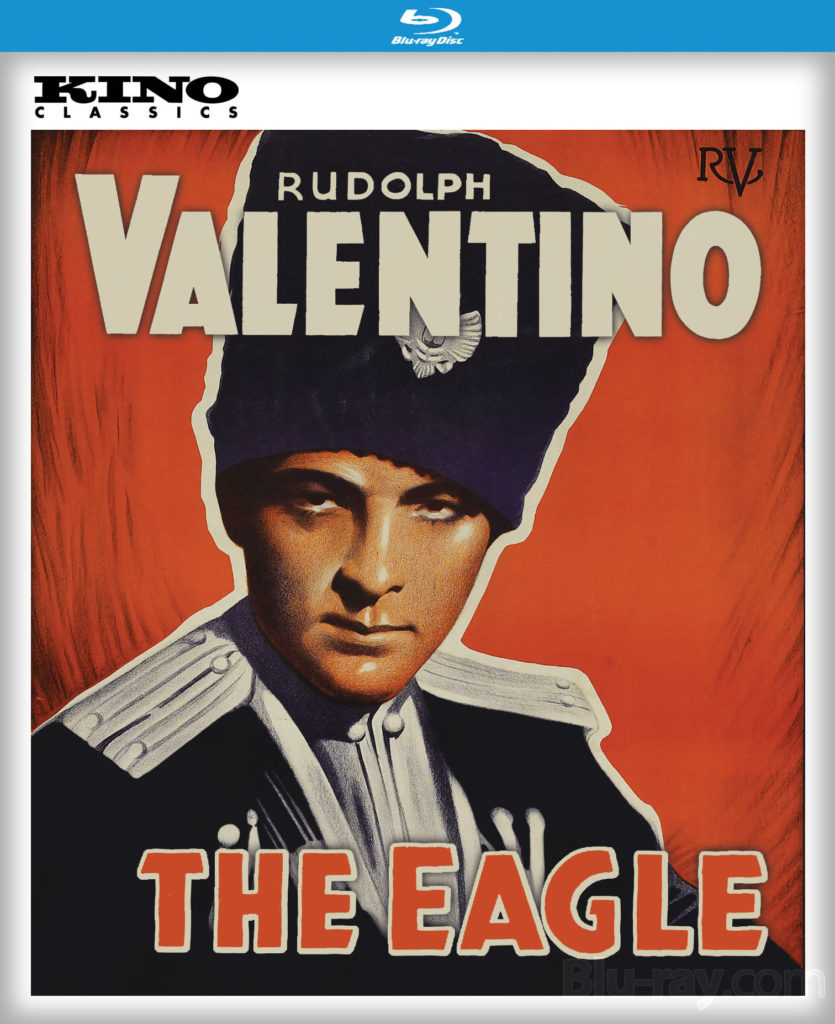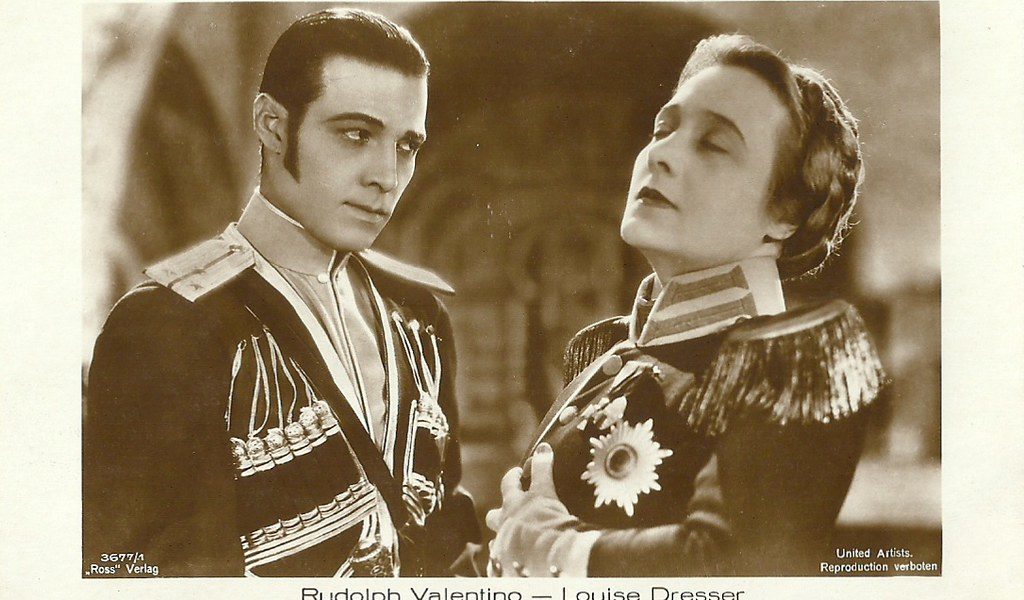DIRECTED BY CLARENCE BROWN
STREET DATE: OCTOBER 22, 2019/KINO CLASSICS

Valentino, the Great Lover of the silver screen, had played in films with action more times than not as a star. The Four Horsemen and Blood and Sand both played on his athletic looks and reputation as a love-maker. The previous year, Valentino had made Monsieur Beaucaire which had been received moderately well by theater-going public but which featured more wigs and tights than some of Valentino’s later fans seemed to appreciate.
Gone from the screen for quite some time at the point of The Eagle’s release, Valentino entered into a project which, it is thought, would broaden his appeal to a larger swath of middle-class male theater patrons. He seemed to deliver with his beautiful co-star, Vilma Banky, his director Clarence Brown (Flesh and the Devil, The Goose Woman, The Trail of ’98, The Last of the Mohicans, and Smouldering Fires are just a handful of the films he directed in the silent era, and all of the ones I personally have seen), and production designer William Cameron Menzies (Thief of Bagdad, The Tempest, Gone with the Wind, and the 1922 Robin Hood feature some of his other set designs). Based on the novel Dubrovsky by Alexander Pushkin, it is from start to finish a wonderful vehicle for all of the talent involved in the production.

Doubrovski (played by Valentino) is a lieutenant in the Czarina’s guard who catches the eye of Czarina Catherine II (Louise Dresser). As he finds himself being flirted with by this powerful woman, he receives a letter from his father that states he is dying and has had a great deal of money stolen by a neighbor named Kyrilla (James Marcus) with the help of a corrupt judge (George Nichols). Doubrovski vows vengeance on Kyrilla and all of his kin, not realizing of course, that Kyrilla’s daughter Mascha (Vilma Banky) is going to be his love interest. Doubrovski, who has now assumed an alternate identity, “The Black Eagle,” impersonates a French tutor in order to get close to Kyrilla and falls in love with Mascha even as his lust for vengeance threatens both his cover and their relationship.
Valentino, it is often said, needed skilled direction. I’m not sure I know exactly how much of that to believe despite seeing him become very hammy in Monsieur Beaucaire–it seems that any actor might play a scene in a ham-fisted way if directed poorly. As far as this film is concerned, Valentino is at ease in front of the camera, even exchanging knowing glances with the audience whom he thinks is in on the ‘joke’ of his image. While not taking himself terribly seriously, Valentino delivers a beautiful performance from start to finish, notably in the scene in which he is imprisoned.
The release itself is likely the best picture quality any audience will see for quite some time. No original camera negatives seem to have survived and both 35 mm elements come from a sound re-release in which an optical soundtrack was printed over a portion of the left side of the image.
The musical score is interestingly and capably performed by the Alloy Orchestra. This is one of their finer scores and it adds a great deal to the film as presented. As the owner of the Image laserdisc, it was a refreshing take on a film for which I have often heard the Carl Davis score. Despite being an ardent fan of Carl Davis’ scores including the one he wrote for The Eagle, I found the Alloy score to interact with the film and provide the right amount of background and setting for the action portrayed on the screen.
The commentary by Dr. Gaylyn Studlar of Washington University is enlightening and interesting as she walks through gender and sexuality and how they weave through the film and its social context upon release.


